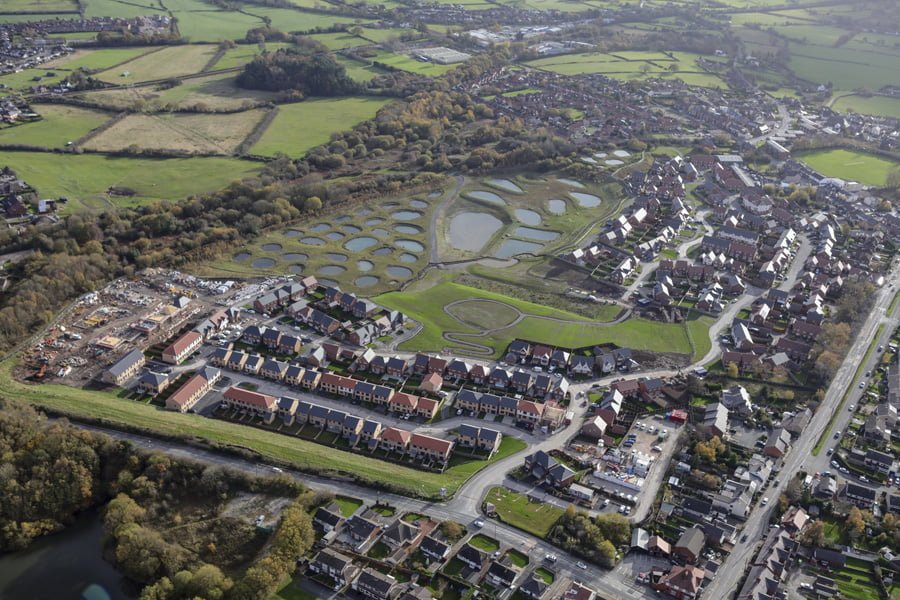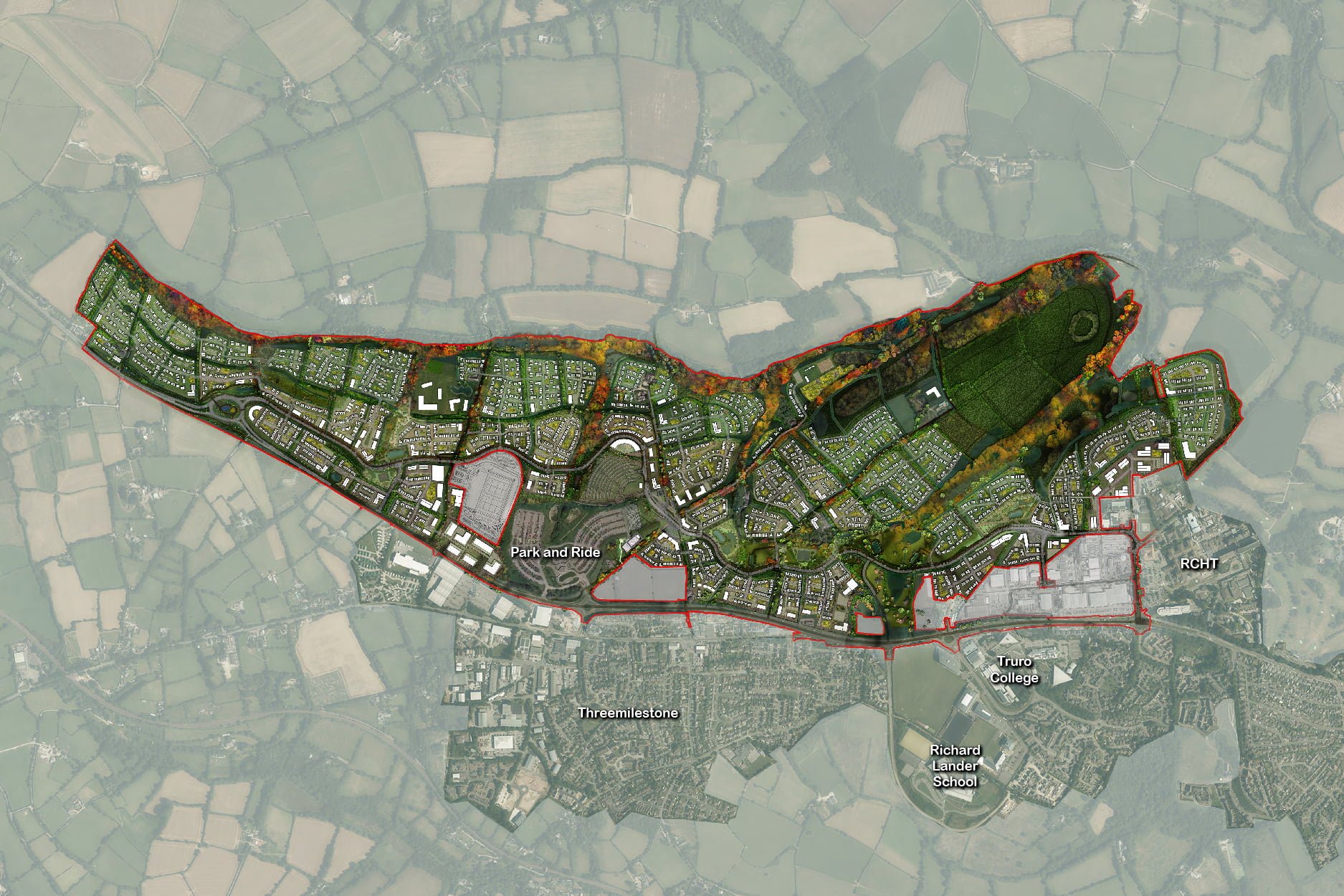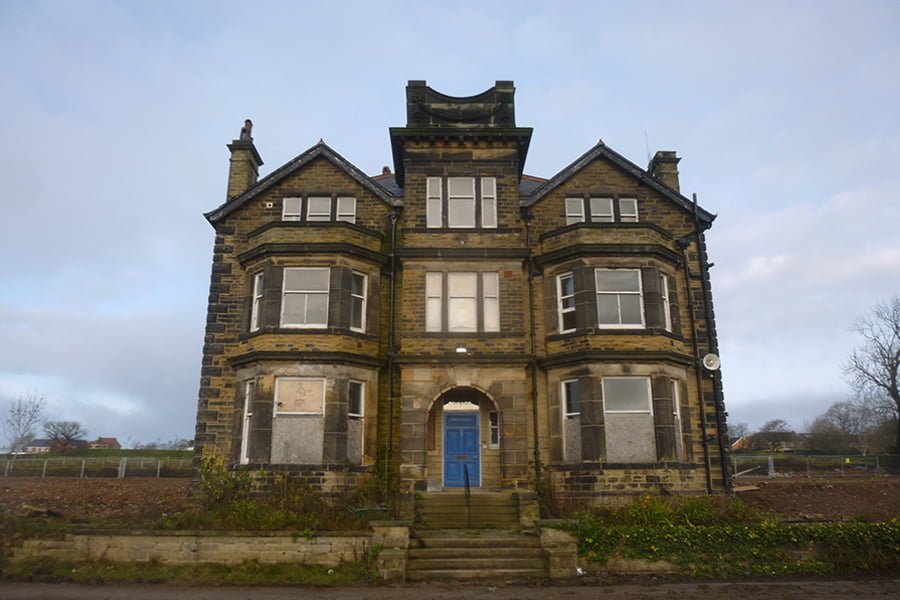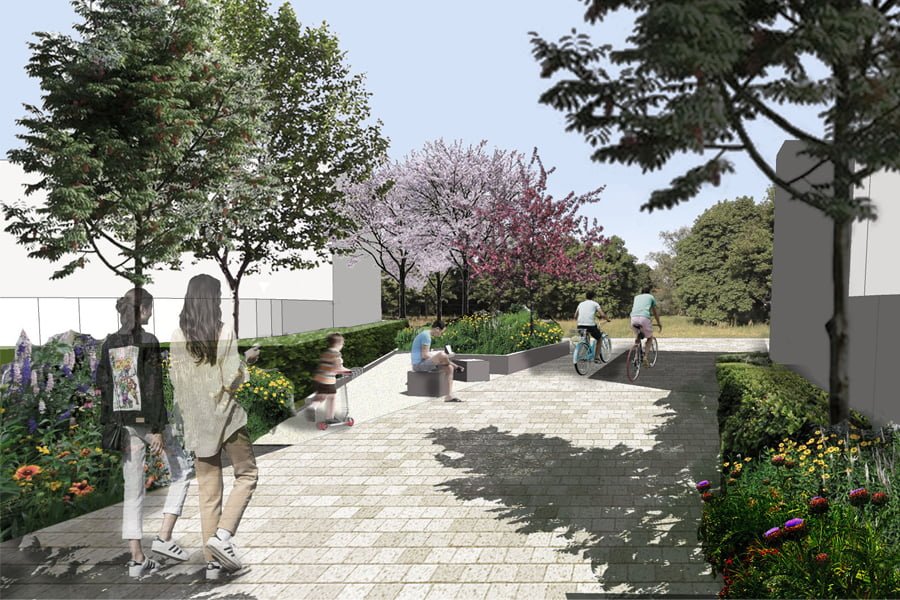The Heathlands Residential Scheme is a 300 house development on a former claypit in Buckley, North Wales. The site had been abandoned and was unsafe, notably with the presence of a 1ha steep-sided lagoon. In addition, Great Crested Newts had colonised the site whilst it was still in active use, making bricks in the 1990s, designating it a Natura 2000 Special Area of Conservation. There was no viable restoration plan and no obvious means of bringing the site back into beneficial use.
Working for Redrow Homes, TEP designed and implemented a detailed restoration scheme. The scheme involved the infilling of the unsafe lagoon, the re-vegetation of the moonscape landscape and conversion to a multi-pond nature reserve. This would be financed by the creation of 300 new family homes. Together with the financing of a warden and management plan, this secured the long term sustainability of the nature reserve.
TEP provided the following:
- Ecological Surveys
- Landscape Masterplan
- Environmental Impact Assessment
- Negotiations with CCW (now NRW), and Flintshire Council
- Great Crested Newt Mitigation
- Landscape Design for the nature reserve and public open space
- Habitat Management Plan
The scheme was highly collaborative, TEP worked alongside WYG (engineering and hydrology consultants responsible for earthworks and SUDS design) and Natural Resources Wales, who was a proactive regulator in respect of Habitats Regulations and great crested newts, providing guidance and support to all parties.
Wild Ground is a local wildlife charity who manage the nature reserve, working alongside Redrow Homes and Trinity Estates who look after the housing development and public landscapes.
The Heathlands Residential Scheme is an exemplar of sustainability; once a derelict and unsafe liability, the site is now an asset of ecological value. Rainwater harvesting, feeding interlinked ponds and connecting to a central soakaway, completed the water cycle within the site and earthworks involved no removal or import of bulk fill.
The scheme demonstrates clarity of vision over the long term, with a determination from the client and the ecologist to overcome technical, planning and legislative obstacles. It was also accompanied by long term management and monitoring arrangements, to secure the ecological success of the regeneration.
In 2017, the scheme won the Landscape Institute’s Award for Science Management and Stewardship. It also received Highly Commended at IEMA’s 2019 Sustainability Awards for Biodiversity and Environmental Net Gain. As well as, Commended at CIEEM’s 2019 Awards for Best Practice – Large-scale Mitigation.














